Solo Exhibition held at Dalston Pier, Hackney, London 2024
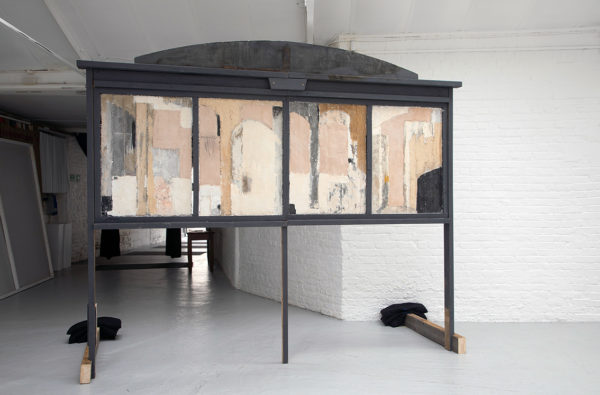


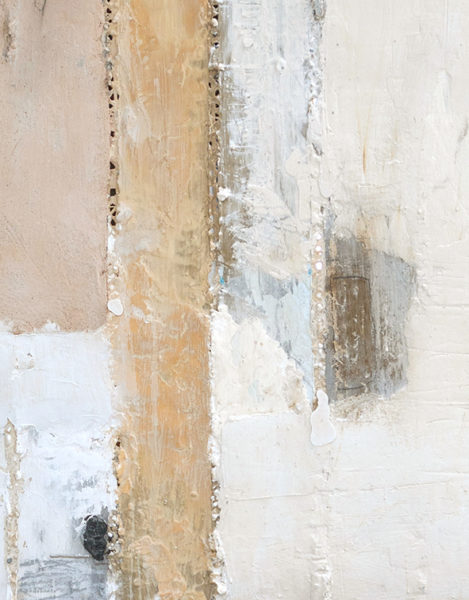
Gilberti’s Choir 2024 – Four mixed-media paintings, inserted into timber structures made from found timber and paint.


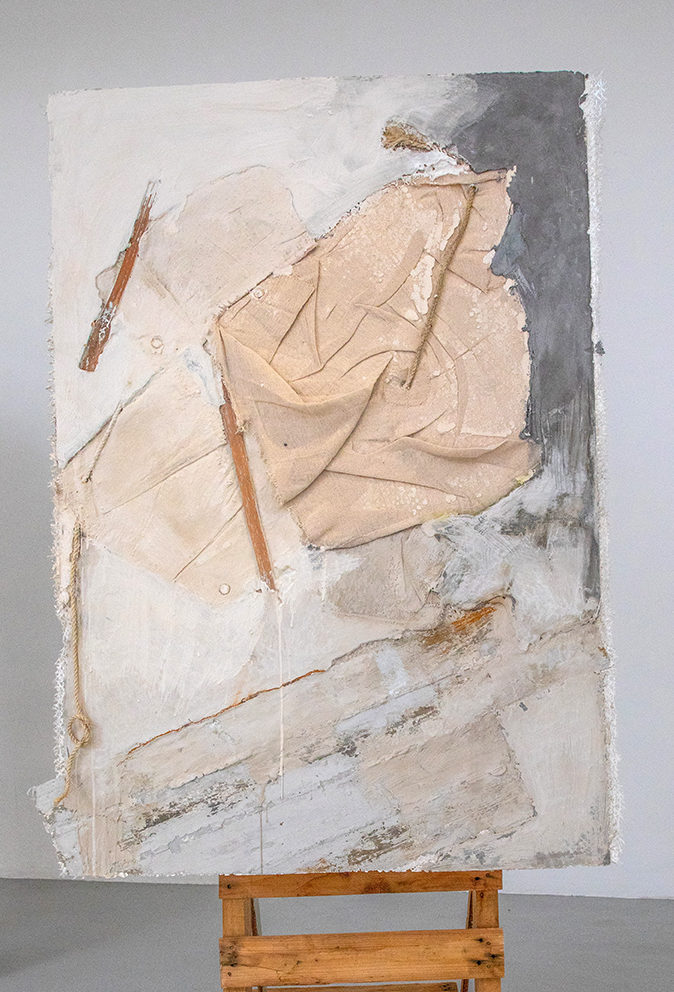

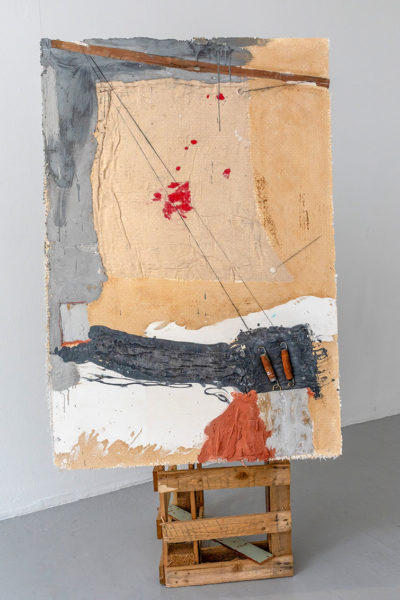
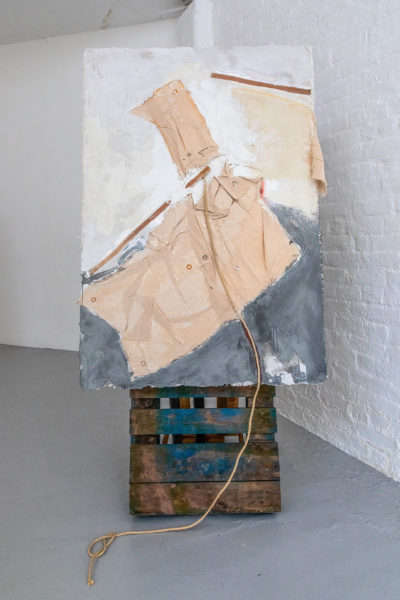
Marine Paintings 2024 ( 1 – 5 )
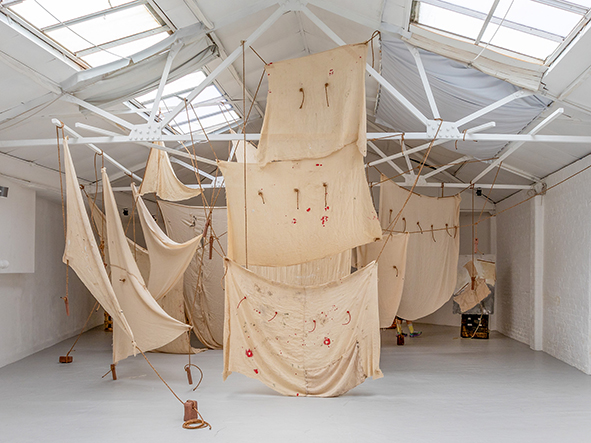

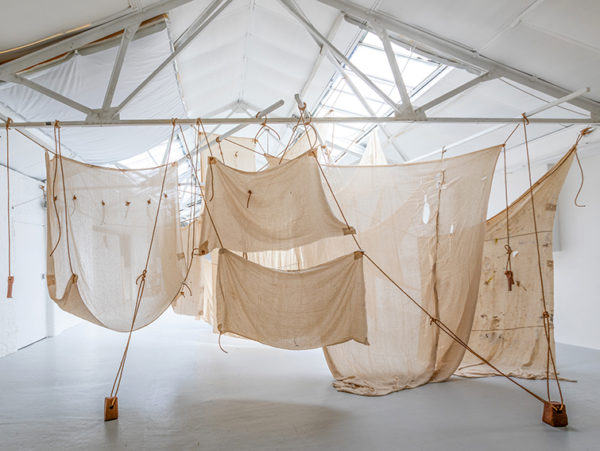
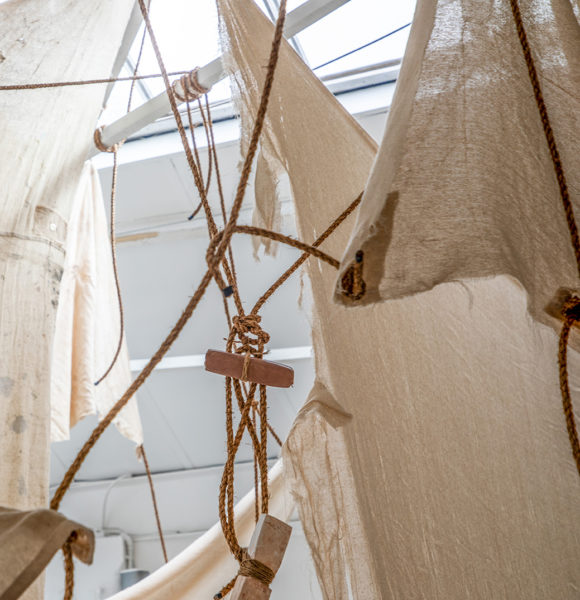
Vessel 2024 – 360 x 500 x 420cm fabric, rope, clay, eyelets
Vessel, Dalston Pier, London – Text by Suze Olbrist & Images by Martina O’Shea
Vessel is a new immersive installation by Australian artist, Kirsty Tinkler – and the culmination of its creator’s life-long fascination with nautical adventures, maritime culture and the oceanic effects of colonialism.
‘Vessel’, the vast rigged, draped and multi-sail structure, forms the centrepiece of this mixed media, site-responsive presentation. As well as providing a resonant architectural framework for the wider show – on closer observation, one spies textural evocations of real world sails, such as those depicted by JMW Turner as well as contemporary touches drawn from the artist’s dream-like family memories.
Elsewhere in the space, viewers can behold two new series of plaster paintings: Marine Paintings (1-5) and Ghiberti’s Chorus (1-4), each crafted using a progressive process that saw the artist work with fibreglass mesh, timber, varying plasters and pigment in place of traditional canvas and paint. Notably, apart from rope, every material within every single piece in this exhibition was either found or salvaged by Tinkler. The raw edges of these paintings also serve to underscore the organic nature of their evolution as the artist’s ideas gradually coalesced into their current form.
The larger works, Marine Paintings, float upon bespoke plinths hewn from found pallets, imbuing them with subtle resonances of voyaging, contemporary homogeny and new colonialism. While the paintings themselves feature pastel and rope as well as plaster and timber, and are awash with sea-faring references from centuries past. Indeed, William Wordsworth’s “Elegiac Stanzas In Memory Of My Brother, John Commander Of The East India Company’s Earl Of Abergavenny’ In Which He Perished By Calamitous Shipwreck, 6 February 1805” – a lengthy, poignant ode to the famed poet’s treasured sibling was a key inspiration for Tinkler. As was the poet’s (and others’) collections of maritime artefacts from shipwrecks of old. The fractured, tenderly worn textures of the Marine Paintings also suggest the material erosion that oceanic voyages cause their vessels – no matter if disaster strikes.
Meanwhile, the four beguiling works that comprise Ghiberti’s Chorus are influenced by the famed Renaissance sculptor’s bronze ‘Gates of Paradise’ which decorate the doorways of the Florence Baptistry. Thus abstracted archways are visible across this quartet of plaster paintings. These iconic shapes – and those of the ‘community notice board’ that houses Ghiberti’s Chorus – further allude to architectural motifs favoured by the Ancient Greeks in whose literature such choruses are famously prominent. For the artist, a deeper question is also present here: why across millennia have humans been drawn to the same structures and shapes?
***********